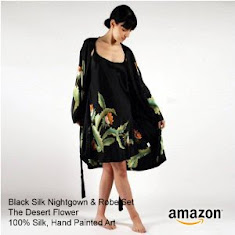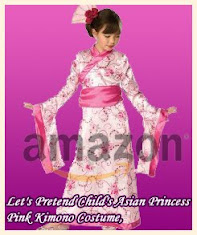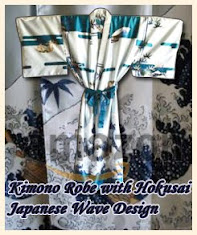kimono is Japanese traditional clothes. Literal translation of kimono dress or something worn (ki means life, and mono means goods).
In the current era, kimono-shaped like the letter "T", like a coat with long sleeves and collar. Length kimono made up to the ankle. Woman wearing a kimono-shaped overalls, while a man wearing a kimono-shaped suit. The collar of the right must be under the left collar. Cloth belt, called obi tied around the abdomen / waist, and tied at the back. Footwear when wearing a kimono is Zōri or geta.
Kimono now more often worn on special occasions women. Unmarried women wore a kind of kimono called furisode. Furisode characteristic is the wide arm almost touching the floor. Women who completed 20 years of age wearing furisode shiki permission to attend. Man wearing a kimono at the wedding, tea ceremony, and other formal events. When he appeared outside the sumo arena, professional wrestlers are required to wear a kimono. Children wearing a kimono while attending the celebration Shichi-Go-San. In addition, workers wear a kimono industry and tourism services, restaurant waitress traditional (ryōtei) and employees of traditional inns (Ryokan).
Traditional trousseau Japan (hanayome ishō) consists of furisode and uchikake (coat worn over furisode). Furisode for the bride to furisode different from young women who have not married. Materials to be furisode wedding motif that is believed to invite luck, such as level of bird images. Color furisode bride furisode brighter than usual. Shiromuku is the name for the traditional bride's dress of white furisode clean with a motif fabric also white.
As a differentiator from Western clothing (yōfuku) is known since the Meiji era, Japanese people refer to traditional Japanese clothing as wafuku (Japanese clothes). Before the familiar Western clothes, all clothing worn is called Japanese kimonos. Another term for the kimono is gofuku. Gofuku term originally used to describe the clothing of the state of Wu Dong (Japanese: Go country) who arrived in Japan from mainland China.
In the current era, kimono-shaped like the letter "T", like a coat with long sleeves and collar. Length kimono made up to the ankle. Woman wearing a kimono-shaped overalls, while a man wearing a kimono-shaped suit. The collar of the right must be under the left collar. Cloth belt, called obi tied around the abdomen / waist, and tied at the back. Footwear when wearing a kimono is Zōri or geta.
Kimono now more often worn on special occasions women. Unmarried women wore a kind of kimono called furisode. Furisode characteristic is the wide arm almost touching the floor. Women who completed 20 years of age wearing furisode shiki permission to attend. Man wearing a kimono at the wedding, tea ceremony, and other formal events. When he appeared outside the sumo arena, professional wrestlers are required to wear a kimono. Children wearing a kimono while attending the celebration Shichi-Go-San. In addition, workers wear a kimono industry and tourism services, restaurant waitress traditional (ryōtei) and employees of traditional inns (Ryokan).
Traditional trousseau Japan (hanayome ishō) consists of furisode and uchikake (coat worn over furisode). Furisode for the bride to furisode different from young women who have not married. Materials to be furisode wedding motif that is believed to invite luck, such as level of bird images. Color furisode bride furisode brighter than usual. Shiromuku is the name for the traditional bride's dress of white furisode clean with a motif fabric also white.
As a differentiator from Western clothing (yōfuku) is known since the Meiji era, Japanese people refer to traditional Japanese clothing as wafuku (Japanese clothes). Before the familiar Western clothes, all clothing worn is called Japanese kimonos. Another term for the kimono is gofuku. Gofuku term originally used to describe the clothing of the state of Wu Dong (Japanese: Go country) who arrived in Japan from mainland China.
04.53 |
Category: |
0
komentar
.jpg)
.jpg)




.jpg)
.jpg)
.jpg)
.jpg)
.jpg)
.jpg)
.jpg)
.jpg)


Comments (0)